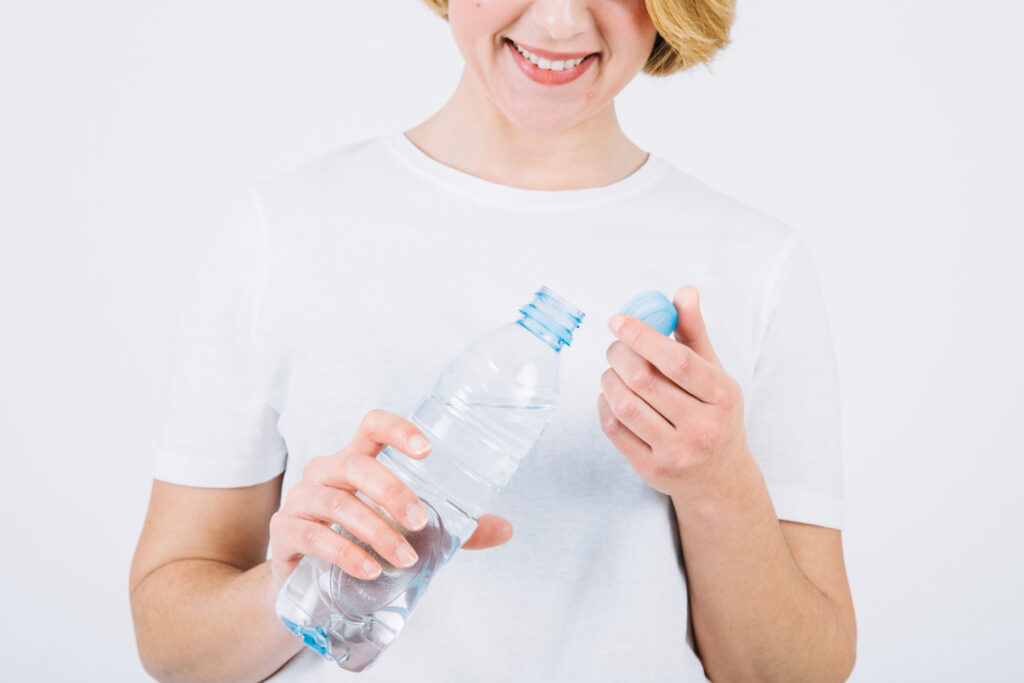
Reusable water bottles, like the popular Stanley tumbler, have become a staple in the wellness community. They offer a sustainable alternative to single-use bottles, help maintain hydration, and can even complement your outfit. However, they come with a drawback: they can accumulate germs and grime.
The issue of dirty water bottles has gained attention on social media. In one viral TikTok video with nearly 100,000 likes, a user discovered mold-like spots on the small parts of her Stanley bottle lid. According to Martin Bucknavage, a senior food safety extension program specialist at Penn State University, neglecting to wash your bottle can lead to the growth of microbes.
“Anytime a bottle isn’t clean and there’s moisture, it supports the growth of microorganisms like bacteria and mold,” Bucknavage told Health. “Bacteria from your mouth and the environment will inevitably find their way into your bottle.”
Dirty water bottles aren’t just unpleasant; they can pose a potential health risk, explained Donald Schaffner, PhD, a professor of food science at Rutgers University. While the chance of exposure to harmful pathogens is low, it’s not zero.
How Often Should You Clean Your Water Bottle?
Experts agree on the importance of regular cleaning, though the frequency may vary. Schaffner suggests that if you use your bottle daily, washing it weekly or every few days is reasonable. Factors like how the bottle is stored and its material can influence this timeframe. “If the bottle is kept in a backpack or purse, it will likely get dirtier faster,” Schaffner said.
Plastic bottles might harbor more microorganisms than stainless steel or glass due to their rougher surfaces and tendency to absorb odors. Bucknavage recommends cleaning your bottle at the end of each day it’s used, likening it to any food surface like a plate or glass. If you use your bottle for drinks other than water, such as coffee or sugary beverages, more frequent cleaning is advised.
If time is short, both Schaffner and Bucknavage emphasize the importance of cleaning the mouthpiece. Schaffner adds, “If your bottle looks dirty, clean it.”
The Best Method for Washing Your Water Bottle
The dishwasher is an effective way to clean a bottle, provided it’s dishwasher-safe and the opening is wide enough for thorough cleaning. Hand-washing with soap and scrubbing tools like bottle brushes can also be effective. To clean small grooves and crevices, Schaffner recommends using a toothbrush. Straw cleaner brushes are another useful tool.
Occasional sanitizing with scalding water, white vinegar, or a diluted chlorine solution can be beneficial, though not necessary if you wash your bottle daily and only use it for water. Ensuring the bottle is completely air-dried is crucial to prevent microbial growth.
Signs You Need to Wash Your Water Bottle More Often
A funky smell or residue buildup indicates it’s time for a thorough cleaning. Dark spots can signal mold, and gray-blackish or light pink slime suggests biofilm, a substance produced by microorganisms. Persistent spots that don’t come off despite cleaning might be mold pigments, which are generally harmless but could be a reason to get a new bottle if they bother you.
What Can Happen If You Don’t Regularly Wash Your Water Bottle?
While skipping cleanings might make your bottle look dirty or affect the taste of the water, it’s unlikely to make you sick. Most bacteria from your mouth or the environment are harmless. Even if your bottle comes into contact with harmful bacteria, such as from “chicken juice,” illness would depend on several factors, including the number of cells and your immune system’s strength.
Ingesting or inhaling toxic mold chemicals (mycotoxins) to the point of illness is also unlikely. By then, the bottle would likely be too moldy and smelly to use.
Although the risk of illness is never zero, and a bacterial infection could cause gastrointestinal symptoms, the key to prevention is regular cleaning. If you have a mold allergy or asthma, mold exposure might trigger symptoms like coughing, congestion, and shortness of breath.
To avoid these issues and maintain good hygiene, frequent washing is essential. Bucknavage advises choosing a bottle that you’re willing to clean regularly.
Maintaining Your Water Bottle
- Use the Right Cleaning Tools: Invest in bottle brushes, straw cleaners, and small brushes to reach tight spaces.
- Choose the Right Material: Stainless steel and glass bottles are less likely to harbor bacteria compared to plastic.
- Stay Hydrated Safely: Regularly washing your bottle not only keeps it clean but also ensures you enjoy fresh-tasting water.
A Quick Review
Regular cleaning of reusable water bottles is crucial to prevent the growth of bacteria and mold. Experts recommend daily washing, especially if the bottle is used for beverages other than water. Dishwasher-safe bottles should be cleaned in the dishwasher, while hand-washing with soap and brushes is effective for others. Prioritize cleaning the mouthpiece, and consider sanitizing occasionally with vinegar or chlorine solution. Always air dry the bottle to prevent microbial growth.











